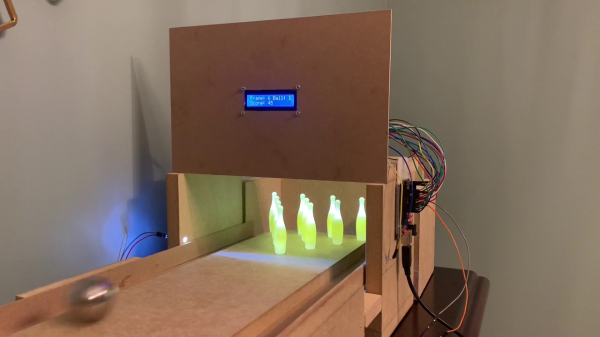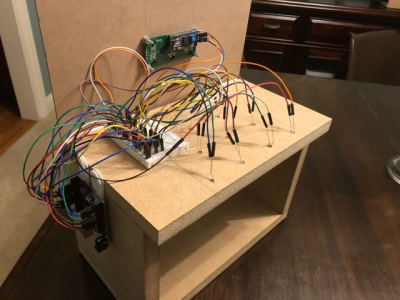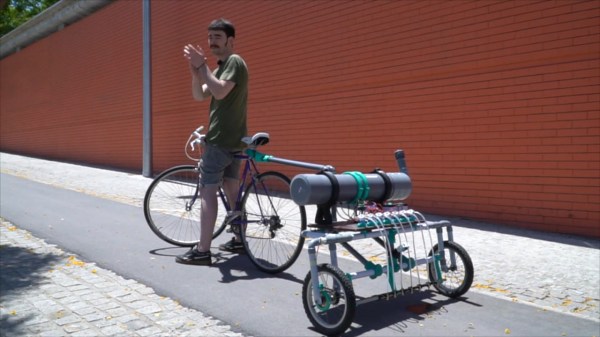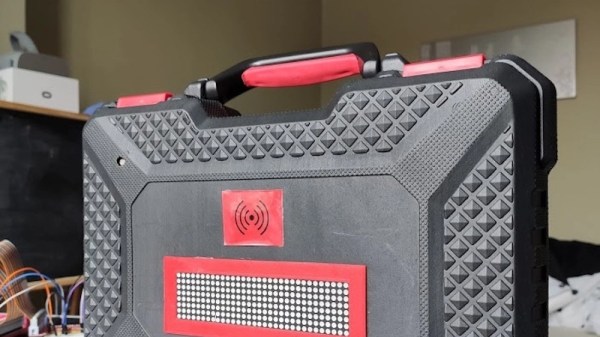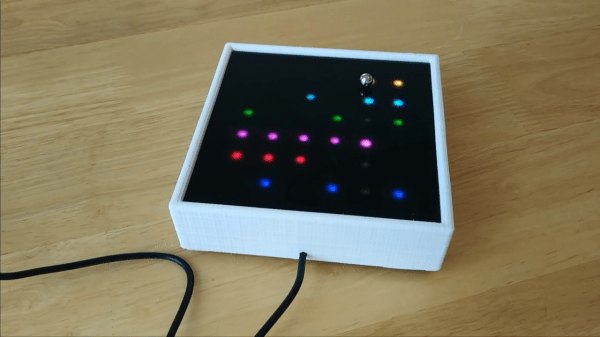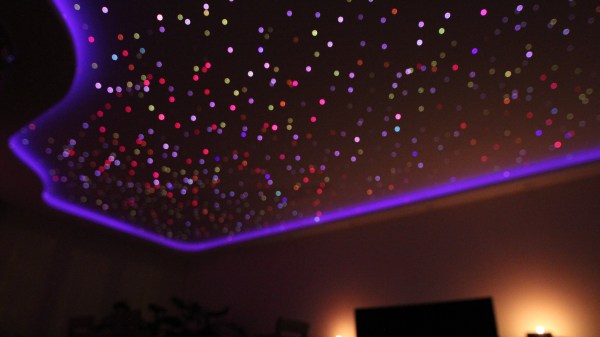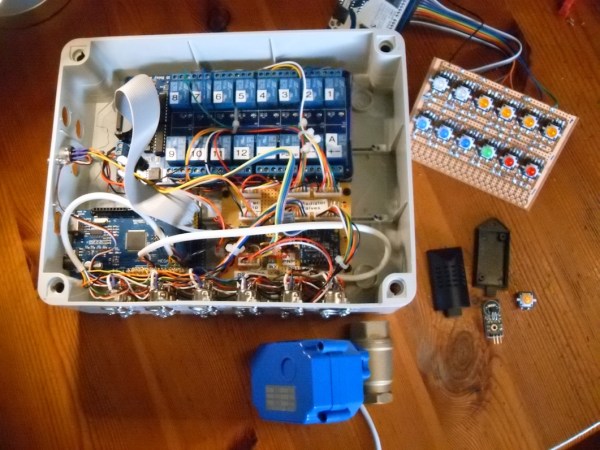Graffiti is a controversial subject, and whether you see it as art or vandalism usually depends where and how you come across it. From the scribbled tag on a house wall, to highly sophisticated murals, they tend to have one thing in common though: making a statement — whether that’s political, showing appreciation, or a simple “I was here”. [Sagarrabanana] had his own statement to make, but chose a less permanent way to express himself with his type of graffiti.
Unhappy about the lack of dedicated cycle lanes in his area, he built an automatic, Arduino-controlled water dispensing bicycle trailer, writing his message on every street he rides on. The build is documented in a video, and shown in action in another one — which are both in Spanish (and also embedded after the break), but pictures are worth their thousand words in any language.
Inspired by persistence of vision (POV), where moving LEDs sync up their blinking to give the illusion of a static image, [Sagarrabanana] transformed the concept to water on a road using an array of solenoids attached to a water tank. Each solenoid is controlled by a relay, and a predefined font determines when to switch each relay — the same way pixels on a display would be set on or off, except small amounts of water are squirted out as the bicycle is moving along. The message itself is received via serial Bluetooth module, and can be easily modified for example from a phone. To adjust the water dispensing to the cycling speed, the whole system is synced to a magnetic switch mounted to one of the trailer’s wheels, so you could theoretically take it also with you on a run.
Time will tell if [Sagarrabanana]’s mission has the success he hopes for, but there’s no doubt the trailer will attract attention anywhere he goes. Well, we wish him all the best to get the message through without requiring a too drastic alternative as writing medium. Although, we’ve seen a graffiti robot that uses chalk spray in the past, so there’s certainly room for a not-too-permanent upgrade if needed.
Continue reading “Message In A Bottle: Bicycle Trailer On A Mission” →


